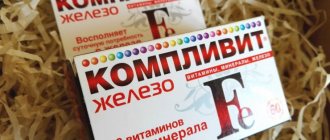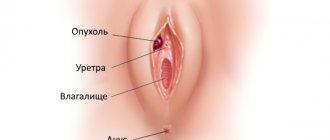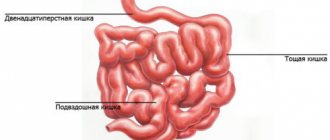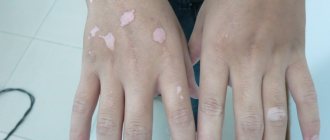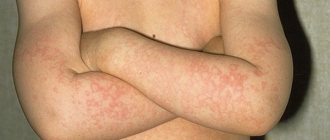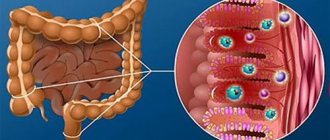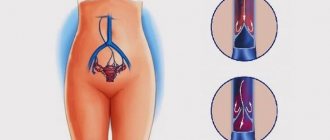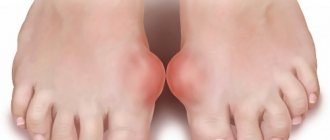Varicose veins of the lower extremities (LVLV) is a chronic pathology that is characterized by thinning of the venous walls, enlargement of vascular lumens and the formation of nodular enlargements.
The disease is diagnosed in 15-17% of the adult population. In adulthood, the disease is more often diagnosed in women, which is associated with hormonal changes in the body (menopause, pregnancy, menstruation).
Varicose veins in the legs are manifested by an extensive clinical picture. Patients complain of heaviness and discomfort in the limbs, fatigue, swelling of the ankle, cramps at night, and protruding blue veins. The course of the pathology in the absence of adequate treatment leads to various complications.
The reasons for the development of varicose veins in the legs, symptoms and treatment - conservative and surgical, classification of the disease - will be discussed in detail in the article.
What's in this article:
Causes of the disease
Veins are vessels through which blood with tissue metabolic products and carbon dioxide moves to the heart. A distinctive feature of their walls is the lower content of elastic fibers. With any disruption of blood flow, the lumen of the veins expands, they stretch, plasma escapes into the surrounding tissues, and circulation in small vessels is disrupted.
Blood is pumped through the veins of the lower extremities due to the work of muscles. Valves prevent reverse flow. When the lumen expands, the valves do not cope with their task. Changes in the venous wall and surrounding tissues determine the development of the clinical picture of the disease.
The only circumstance for the occurrence of varicose veins of the lower extremities is a genetic inferiority of the structure of the vascular wall. Varicose veins are associated with impaired collagen protein synthesis. There are also predisposing factors:
- overweight;
- changes in hormonal levels, leading to relaxation and expansion of the venous wall (pregnancy);
- diseases and conditions that cause disturbances in blood flow and damage to the walls of veins (diabetes mellitus, alcoholism, thrombophilia);
- poor nutrition with a lack of protein, eating food that causes fluid retention and constipation;
- prolonged sitting;
- activities that involve standing for long periods of time;
- wearing high-heeled shoes;
- use of corsets and tight underwear;
- hard physical labor;
- surgical operations.
Symptoms of varicose veins of the lower extremities
It is important to have an understanding of the main symptoms of varicose veins of the lower extremities.
- Change in appearance of superficial veins. The first signs of damage can be seen on the feet and legs, since blood pumping from there suffers even at the onset of the disease. The initial signs of varicose veins are the appearance of small spider veins. This is an expansion of the network of veins; they look like small dark purple or crimson “octopuses”. This sign may not be a symptom of varicose veins, but more often it signals its initial manifestations.
- Typical symptoms of varicose veins on the legs include the appearance of areas of thickened large veins, around which a network of smaller ones “scatter”, the outlines of which are blue or purple. If you look at a photo of varicose veins of the lower extremities, this sign is visible to the naked eye. As the disease progresses, disturbances will be visible higher up – on the hips.
- Pain and heaviness in the legs. Patients with varicose veins note the appearance of bursting pain in the lower leg muscles after exertion on the lower extremities (walking, standing for a long time). When palpating the calf muscles, the discomfort becomes stronger.
- After resting and being in a horizontal position, the pain and heaviness recede, but when returning to normal activities they make themselves felt again. This set of symptoms for varicose veins is called “heavy legs” syndrome. At night, cramps in the calf muscles bother me. If the examination does not reveal changes in the superficial vessels, varicose veins of the deep veins should be assumed.
- Swelling of the legs begins in the area of the feet, then the swelling rises higher, when a person notices that the shoes become tighter in the evening, it is difficult to fasten the tops of the boots. This symptom of varicose veins is more pronounced after exercise, in the evening. You should pay attention to the condition of the legs after a night's sleep - persistence of swelling in the morning is considered prognostically unfavorable. This means that varicose veins are no longer compensated. Severe blood flow disturbances lead to the development of complications. Swelling of the lower extremities may accompany itchy skin.
- Skin pigmentation along the affected veins, around them, in places of injury. The subcutaneous tissue swells and thickens (lipodermatosclerosis). Peeling and dryness of the skin may occur. Impaired skin nutrition leads to thinning of the skin; the shins acquire a bluish tint.
- Violation of trophism (nutrition) with varicose veins causes a decrease in the temperature of the feet, patients complain of chilliness in the legs.
- Trophic ulcers against the background of swelling of the legs look like skin defects with uneven edges. This is a complication that indicates a long-term illness.
First signs
The initial stage is characterized by the following symptoms:
- feeling of heaviness in the legs after a day of work, long walking or standing;
- fatigue and pain;
- appearance of spider veins (telangiectasia)
- swelling in the ankle area.
All these manifestations disappear after a night's rest, but reappear in the evening. These signs characterize the first stage of the disease, when the venous system first fails and blood stagnation begins. There is an increase in pressure on the vascular wall, its lumen increases, and the internal valves stop closing completely and allow the blood to partially return back.
When examining the patient, no visible changes are noted. You can note a slight pastiness in the lower part of the leg. As a rule, there are no complaints during this period. Patients usually explain minor manifestations as simple fatigue.
At this stage, successful treatment of varicose veins is possible, since there are no irreversible changes yet. The vascular wall does not stretch and maintains its original shape. It is enough to identify the cause underlying the stagnation and eliminate it.
Stages
According to the clinical picture, varicose veins are divided into 3 stages.
- Compensation. There are no or minimal discomforts. Standing on your feet for a long time may cause discomfort. On the skin, patients may notice the appearance of spider veins, which are formed due to the expansion of capillaries. If swelling of the feet appears, it quickly goes away after rest.
- Subcompensation. Upon examination, the saphenous veins are stretched and can be felt as dense cords. A clinic for varicose veins appears: patients complain of a feeling of fullness in their legs. Swelling occurs towards the end of the day or after exercise and disappears after rest. Muscle cramps bother me at night. Neurological symptoms are possible: skin numbness, goosebumps.
- Decompensation. At this stage of varicose veins, swelling does not disappear after sleeping or resting in a lying position, but gradually it rises higher. Prolonged course leads to disruption of skin nutrition. It becomes thinner, dry, hair falls out, and areas of hyperpigmentation appear. The subcutaneous tissue is compacted. Even minor injuries are difficult to heal and ulcers form.
Varicose veins on men's legs
The main factors for the occurrence of varicose veins on the legs in men are:
- smoking;
- great physical activity;
- abuse of alcoholic beverages;
- constipation;
- unbalanced diet;
- physical inactivity;
- lifting weights.
Men's work is often associated with physical activity. Regular tension can provoke saphenous vein stenosis.
Another factor in the development of the disease is the consumption of high-calorie fatty foods, as well as a lack of nicotinic acid and omega-3 in the body.
Treatment of the disease occurs in the same way as in women.
Degrees of chronic venous insufficiency
The long course of varicose veins causes the appearance of chronic insufficiency of the veins of the lower extremities. The transition in degrees is associated with the appearance of pathological symptoms. The following classification is common:
- Grade 0 is characterized by the absence of clinical manifestations;
- 1st degree is characterized by the occurrence of “heavy legs” syndrome;
- at grade 2, swelling is persistent, involvement of the skin and subcutaneous tissue begins (hyperpigmentation, lipodermatosclerosis);
- at stage 3 of chronic venous disease, vascular disorders become so pronounced that they lead to the formation of trophic ulcers of the leg.
Complications
Uncompensated varicose veins with impaired outflow due to the expansion of the lumen of the veins leads to the development of complications. If serious symptoms appear, you should immediately seek medical help.
- Thrombophlebitis. Slowing blood flow causes blood thickening, and the vascular wall with varicose veins becomes more fragile. These conditions lead to the formation of wall thrombi, sometimes completely blocking the lumen of the vein. According to the course, thrombophlebitis can be acute, subacute and chronic. The acute version occurs most clearly: fever, pain along the veins, swelling. The leg becomes colder to the touch. If the superficial veins are affected, areas of painful dilation can be detected by palpation. Red stripes are visible on the skin.
- Deep vein thrombosis of the leg. Complications of varicose veins do not manifest themselves immediately; patients may get used to swelling of the lower leg, muscle pain and ignore the symptoms. Often the blood clot does not completely block the vein. The most dangerous complication is the detachment of a blood clot and its entry into the pulmonary bloodstream. In this case, a fatal pulmonary embolism may develop.
- Trophic ulcer. Violation of the outflow due to the expansion of the lumen of the veins with varicose veins leads to trophic changes. Such ulcers are difficult to correct. They become entry points for secondary infection.
- Bleeding. Varicose veins cause the walls to become brittle and rupture from minor injuries. Bleeding can be: spontaneous, traumatic, subcutaneous or external.
Complications of varicose veins of the legs
The risk to the patient’s health and life is not posed by the disease itself, but by the complications it causes. These include malnutrition of the skin, which can lead to the formation of trophic ulcers and erysipelas, as well as the most dangerous complication - thrombophlebitis.
It leads to increased thrombus formation, as a result of which blood clots, breaking away from the venous walls, can disrupt the functioning of internal organs, and in the most difficult cases cause the death of the patient.
Very often, acute thrombophlebitis of the superficial veins appears as a complication of varicose veins. Sometimes, as a result of damage, varicose veins rupture and bleeding. When blood leaks from a node that has burst, very significant blood loss is possible.
In addition, due to increased pressure in the venous system, arterial blood flow slows down. Because of this, hypoxia and subsequent oxygen starvation may develop. As a result of the development of this condition, tissue cells may die, which is a dangerous process for the body. Due to severe stagnation of blood in the veins, toxins accumulate in the tissues.
Complications of this disease also include blockage of blood vessels by a blood clot, impaired nutrition of leg tissues, and the appearance of pigmentation and darkening of the skin.
Exacerbation
Exacerbation of varicose veins occurs due to various reasons. These include:
- Blood thickening due to loss of moisture, insufficient drinking regimen. This reason “plays” most clearly in the summer months, leading to a deterioration in the condition of the altered veins.
- Changes in hormonal levels. Progesterone relaxes the vein walls during pregnancy. Body weight increases, physiological changes occur in the composition of the blood - this is why expectant mothers are at risk for exacerbation of varicose veins.
- Increased body weight. The load increases, the veins expand and the outflow of blood is disrupted.
- The appearance of obstructions in the pelvic area. Compression of blood vessels occurs during pregnancy or a tumor of the abdominal organs.
An exacerbation occurs as an intensification of existing symptoms of varicose veins or the appearance of new, more severe symptoms. It is necessary to pay attention to any changes in the health of the veins in order to identify the causes of deterioration in time and begin to combat them.
Treatment
Timely treatment of varicose veins of the lower extremities will compensate for the disease and prevent serious complications.
Conservative therapy
Conservative treatment of varicose veins includes the use of compression stockings and medications.
Compression knitwear is divided into preventive and therapeutic. This type of underwear acts as an outer frame. By squeezing the legs, it is designed to help the outflow of blood from the veins of the extremities.
On a note!
The degree of compression (compression) of the underwear is selected based on the task that wearing it should solve. Prophylactic knitwear prevents the appearance of signs of the disease or slows down its development. Therapeutic is divided into 4 classes according to the degree of compression, depending on the severity of varicose veins. Recommendations for selection are given by a phlebologist.
Drug treatment of varicose veins does not cure the disease, but only inhibits its development and prevents exacerbation. The drugs are used locally or systemically, they affect:
- the wall of the vein - it is toned and prevents the occurrence of its expansion, this is how Detralex, Venarus, Phlebodia, Troxevasin work;
- blood condition - drugs reduce blood viscosity, prevent the occurrence of thrombosis, for this purpose Trental, Lyoton, Aspirin are prescribed;
- To relieve pain in varicose veins, local painkillers are prescribed in the form of an ointment (Ketonal).
Is it possible to cure varicose veins without surgery?
Treatment of venous insufficiency at the initial stage of development can be treated without the use of surgery. Using conservative therapy methods, it is possible to reduce the signs of pathology and eliminate the likelihood of complications.
First of all, non-surgical treatment of varicose veins involves:
- Taking medications of various groups: phlebotonics, drugs that thin the blood, proto-inflammatory non-steroidal drugs, vitamin complexes. They can be used either orally or topically.
- Performing therapeutic exercises. Regular performance of a special set of elementary exercises will increase vascular tone, improve venous and lymphatic outflow and stabilize arterial blood flow.
- Wearing compression garments. The correctly selected type and size of therapeutic knitwear with the appropriate compression class normalizes blood flow in case of varicose veins.
- Maintaining a healthy lifestyle. The point is to change the passive image to a moderately active one. This involves the use of adequate physical activity. It is recommended to train on treadmills and ride a bicycle over rough terrain. Also, don’t forget about daily walks in the fresh air. Water aerobics, swimming, and aqua yoga have a beneficial effect on the health of veins affected by varicose veins.
- Maintaining a proper diet. It is a prerequisite for the treatment of varicose veins of any stage and regardless of its location. Daily consumption of seafood, fresh vegetables and fruits, tomato juice, flaxseed oil, chocolate, cocoa and cereals made from wheat, oats and barley has a positive effect on the condition of weakened blood vessels.
Experts in the field of vascular surgery claim that treatment of varicose veins without surgery is possible only with timely consultation with a doctor. Following the basic rules of conservative therapy at home will allow you to quickly get rid of this disease.
Treatment of varicose veins at home can be effective only at the initial stage of the disease and subject to an integrated approach. On average, the therapeutic course lasts at least 2–3 months. But, after passing it, it is necessary to undergo a follow-up examination with the attending physician.
Treatment of advanced stages of varicose veins at home without the use of specialized treatment methods is impractical and can lead to the development of irreversible consequences.
